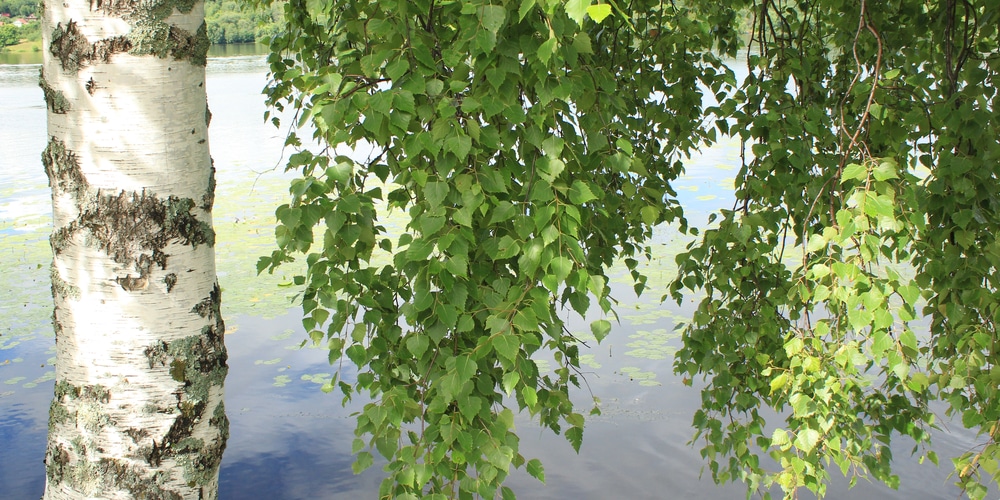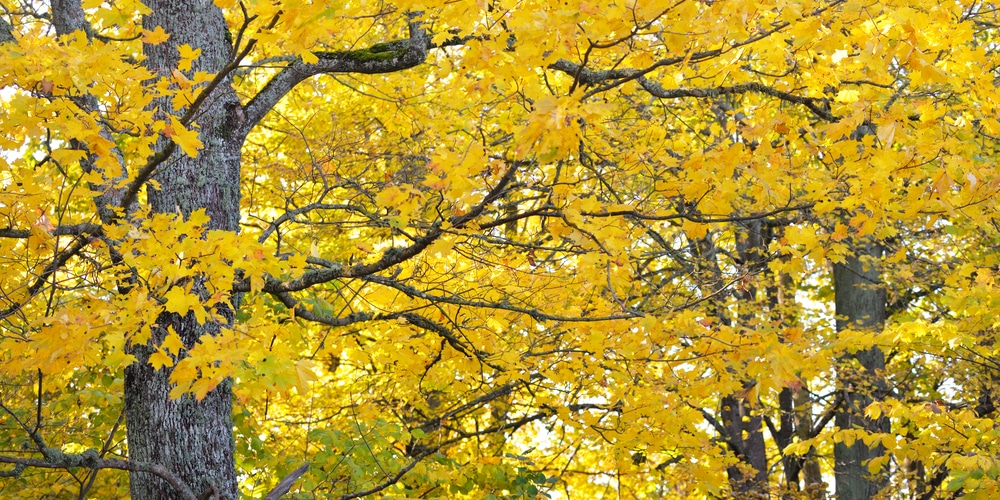Birch trees are medium-sized trees that boast over 40 varieties, and are found all over the world. While you can encounter Birch trees in most parts of the United States, they tend to prefer cooler climates, making Maryland an ideal place for them.
Types of Birch Trees That Grow in Maryland

Below are the three native types of Birch trees that you can find throughout Maryland. Although you can plant other varieties of Birch trees, be prepared to spend extra time caring for them.
- River Birch Trees (Betula nigra)
- Sweet Birch Trees (Betula lenta)
- Yellow Birch Trees (Betula alleghaniensis)
River Birch Trees (Betula nigra)
River Birches are native to Maryland, where they thrive in wetlands. People enjoy planting these trees in their yards because of the tree’s exceptional tolerance for flooded conditions. Therefore, they’re hardy in urban areas where runoff is common.
What makes the River Birch tree so stunning is that its bark peels off to showcase its trunk’s colors, which range from cream to a red-brown. During the spring, this tree becomes adorned with bundles of flowers and seeds (called catkins) that hang down from it. The River Birch is also a beauty in the autumn when its leaves turn bright yellow.
If you plant a River Birch tree in your yard, you can expect it to grow at a rate of one to two feet per year until it reaches 40 to 70 feet. Although it enjoys wet soil, you should place it in an area that drains well.
River Birches aren’t picky about their soil type; they can grow in loamy, sandy, and clay soil with some acidity.
Sweet Birch Trees (Betula lenta)
Sweet Birches are mountain-loving trees commonly occurring in the Appalachians. For this reason, you’ll find them in the westernmost part of Maryland, particularly in the Piedmont and mountain zones. It’s rare to encounter Sweet Birch trees along the state’s eastern shores.
The dark grayish-black nature of the Sweet Birch tree makes it stand out from other Birches in Maryland, and some people mistake it for a cherry tree because of its bark. However, the bark eventually breaks into scaly plates, revealing horizontal lenticels.
A striking wintergreen aroma will surround you when you walk past the Sweet Birch tree. It’s a low-growing tree, reaching around 40 feet at its highest. When Sweet Birches are young, they have a distinct pyramid-like shape.
If you wish to plant a Sweet Birch tree, you should do so in slightly acidic, deep soil with lots of nutrients. Ensuring ample drainage is also crucial for it to thrive.
Yellow Birch Trees (Betula alleghaniensis)
The high woodland areas of Maryland abound with Yellow Birch trees. These trees thrive in mountainous terrain that contains soil rich in nutrients.
As its name implies, Yellow Birch trees have a yellow color, particularly on the underside of their bark when strips of it flake off. Yellow Birch trees are relatively tall for the Birch family, reaching 60 to 75 feet high. That makes them the largest Birch tree in North America.
Yellow Birches grow a sprawling candelabra canopy when they grow in open spaces. But when you encounter them in densely forested areas, they have a more slender form. They produce cone-like fruit in the late summer that emerges from drooping, yellowish-purple catkins.
Birch trees have a lifespan of approximately 150 years. But under ideal conditions, some trees can double that lifespan to 300 years. It’s best not to prune these trees in the winter or spring, for their sap will bleed.
Enjoying Birch Trees in Maryland
Birch trees are an excellent option for landscaping in Maryland. Because of their beauty, many people enjoy planting Birches in clusters near a water feature or pond.
You can expect Birch trees to be a low-maintenance addition to your Maryland yard once they take root. However, Birchs benefit from extra watering during droughts, especially on hot summer days.


